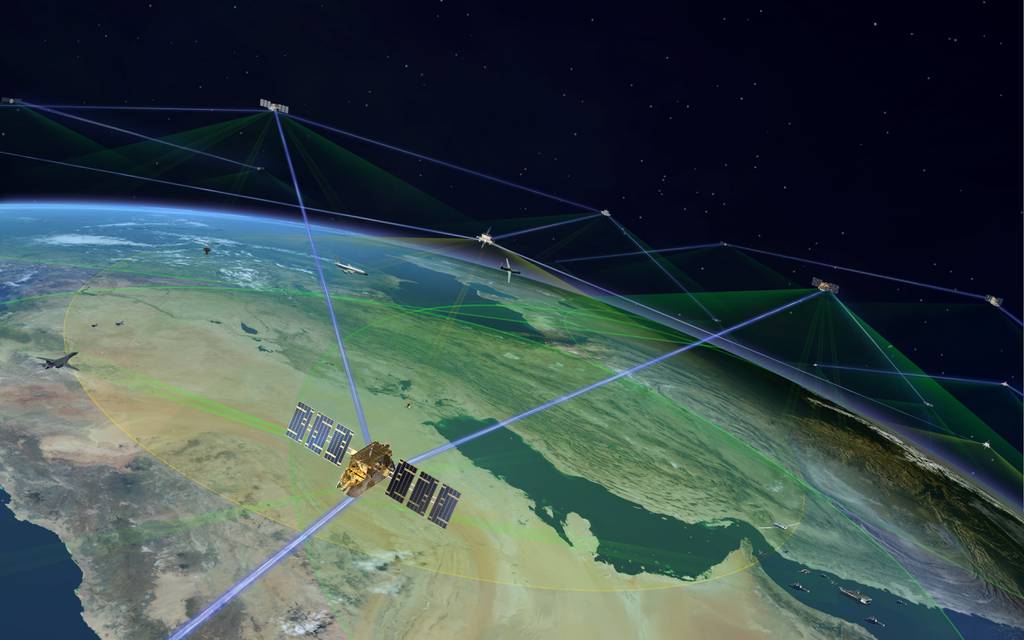
As more governments and commercial companies look to proliferated satellite constellations for increased capacity, some defense experts are concerned that these large fleets could be providing cover for space weapons or spy satellites.
A Defense Advanced Research Projects Agency effort aims to use artificial intelligence to shine a light on those potentially nefarious capabilities.
In 2023, DARPA selected Slingshot Aerospace, a California-based space technology firm, to create an AI system that identifies anomalous satellites within these large constellations. The company unveiled its model, dubbed Agatha, on June 5, announcing that it had demonstrated the ability to detect outlier satellites among operational constellations.
“Identifying malfunctioning or potentially nefarious objects and their objectives within large satellite constellations is a complex challenge that required us to reach beyond traditional approaches and develop a novel and scalable AI algorithm,” Dylan Kesler, Slingshot’s director of data science and AI, said in a statement. “Our Agatha model has also proven its ability to deliver high-quality insights that provide ‘explainability’ or context for why specific objects were flagged.”
The Chinese government has announced plans to launch two megaconstellations in the coming years comprised of tens of thousands of satellites, a bid to rival Elon Musk’s SpaceX, whose network of Starlink communication satellites includes more than 6,000 operational spacecraft.
At the same time, Defense Department officials have confirmed Russia is developing a satellite that could carry a nuclear weapon and last month launched a counterspace weapon designed to follow U.S. spy satellites.
Audrey Schaffer, Slingshot’s vice president of strategy and policy, told C4ISRNET these developments make a tool like Agatha particularly important.
“Agatha is one example of a technology that is designed to help see clearly in that kind of increasingly crowded and congested environment,” she said. “In particular, Agatha really helps you find that needle in the haystack.”
To train Agatha’s algorithm, Slingshot fed more than 60 years of data from simulated megaconstellations created by the firm. Those constellations included outlier satellites, which allowed Agatha to distinguish between types of satellites and flag anomalies.
The system incorporates a method known as inverse reinforcement learning. The technique allows Agatha to not only recognize and track anomalous spacecraft maneuvers or other activity but to assign motivation to those actions.
“Agatha doesn’t just identify that this particular satellite is an outlier,” Schaffer said. “It can also make an assessment of why the satellite is behaving differently than the other satellites in the constellation and what policies or operational directives it might be following that explain the difference in behavior.”
Once it had trained the model, Slingshot set out to test Agatha’s abilities using existing commercial constellations. Schaffer wouldn’t identify which companies’ satellites the system observed, but said it flagged several non-nefarious anomalies, which it then confirmed with the spacecraft owners.
The DARPA-led project wrapped up earlier this year, and Schaffer said the company is now in conversations with potential government and commercial customers who may be interested in Agatha. She noted that the tool could be useful to U.S. Space Command, National Space Defense Center monitors activities in space.
“The amount of traffic in space is only growing,” she said. When you have not just 10,000 satellites that are active but 10,000 satellites in a single constellation, it is very quickly going to be impossible for humans or even teams of humans to sift through all that data and identify potential threats to our national security.”
Courtney Albon is C4ISRNET’s space and emerging technology reporter. She has covered the U.S. military since 2012, with a focus on the Air Force and Space Force. She has reported on some of the Defense Department’s most significant acquisition, budget and policy challenges.
- SEO Powered Content & PR Distribution. Get Amplified Today.
- PlatoData.Network Vertical Generative Ai. Empower Yourself. Access Here.
- PlatoAiStream. Web3 Intelligence. Knowledge Amplified. Access Here.
- PlatoESG. Carbon, CleanTech, Energy, Environment, Solar, Waste Management. Access Here.
- PlatoHealth. Biotech and Clinical Trials Intelligence. Access Here.
- Source: https://www.defensenews.com/battlefield-tech/space/2024/06/05/darpa-project-uses-ai-to-flag-space-weapons-spy-satellites/



